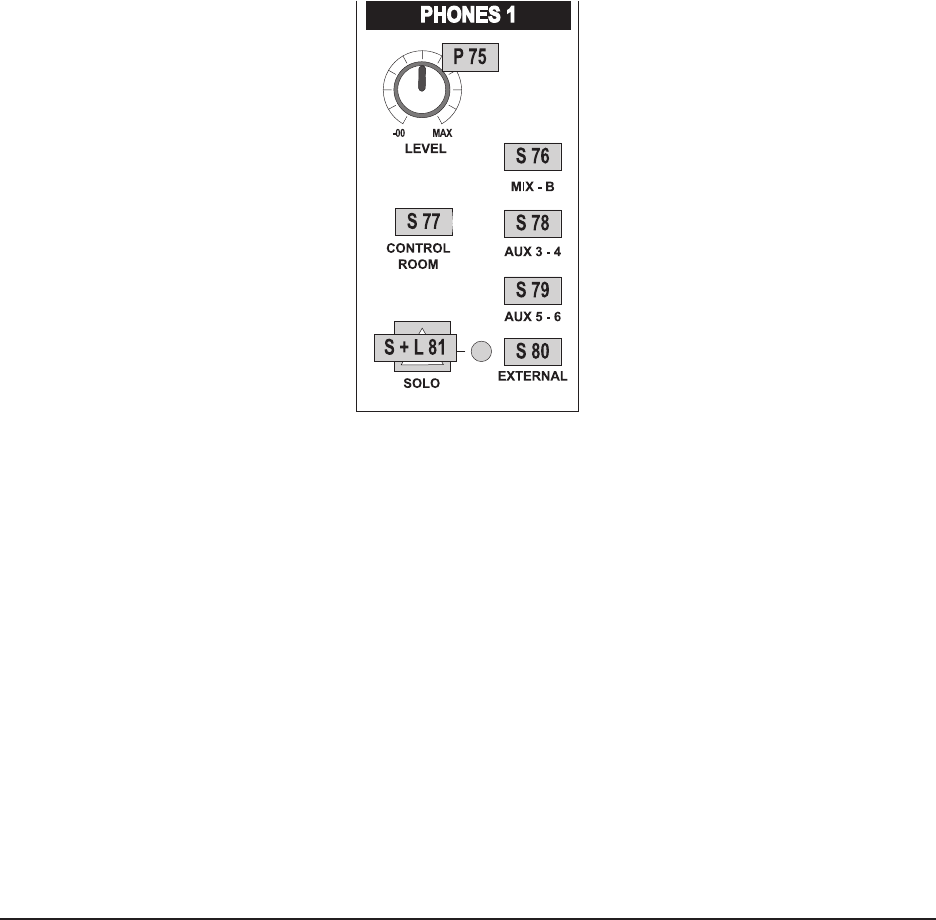
21
The CONTROL ROOM LEVEL pot P86 sets the level to the control room monitors. This is sourced post the
main main mix stereo fader setting: otherwise you wouldnt be able to hear your fades. There is also a similar
STUDIO volume pot (P82).
+ Owners of MIDI production suites might like to drive a second pair of control room speakers
from the studio output, but take care when using the TALKBACK mic: no -20 dB offset is
applied to the studio output!
We would like to recommend you to use half-a-dozen sets of speakers on an external switching matrix,
including studio monitors, ghettoblaster, club system, car stereo and overblown 2" speakers loosely screwed
into a less-than-airtight cardboard box.
+ If you are using the STUDIO output to drive a pair of monitors actually in the studio, do not
ever leave P82 turned up during a take. Howls and howlround may well be the result.
Lastly, there is a MONO button (S86), useful for checking the phase correlation and/or coherence of a stereo
signal. Again, this does not affect the main mix output.
6.4 Headphones
Both HEADPHONES 1 & 2 masters are identical.
Fig. 6.5: Phones
A SOURCING matrix picks up any or all of MIX-B (S76), CONTROL ROOM (as chosen in monitor section,
S77), AUX 3/4 (S78), AUX 5/6 (S79) and EXTERNAL (S80). In addition to the sources which are directly
selectable from the headphones masters, aux returns 3 to 6 may be force-fed into HP1 & HP2 from the aux
returns masters (S55, S56, etc.).
The headphone mix level is controlled by a master volume pot (P75), and the gain is sufficient to drive
headphones directly. This is fine for a MIDI suite with overdub booth, but for the bigger studios headphone
network wed recommend using a separate headphones distribution amplifier like our BEHRINGER
POWERPLAYPRO HA4400. This can offer the added advantage of independent headphones level control
for every performer.
A SOLO button (S81), with its own LED, enables monitoring of the headphones amplifiers output signal.
This way the engineer can monitor whats going on in the cans on the control room monitors, though in our
experience this does not give as true a picture as auditioning the cue feed from a set of headphones identical
to those worn by the performer(s).


















